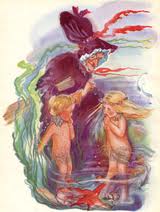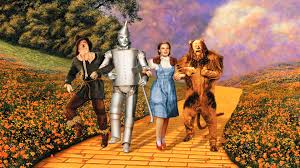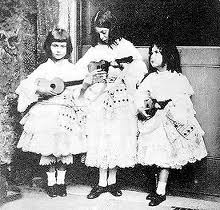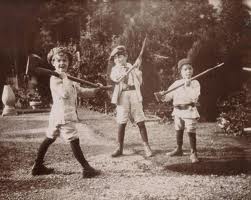The agendas that author’s have when writing their works of fiction are very interesting. They cover an array of motives and serve a purpose that is ultimately for the author. The authors may have a strong moral code that they believe all others should also have and so they write stories where one can learn and see how following these morals will lead them to having the best life they can have. Another motive could be political agendas. Many texts are written in a time of political turmoil and some authors incorporate this into their works. Authors also tend to put much of themselves into their stories. The reasons can vary; perhaps it is a way to immortalize themselves or, a way for them to work through insecurities or problems in their lives. Most likely, it is a way for the authors to write something that they know personally and feel a connection to.
 Charles Kingsley inserts his belief in religion and duty within his tale of The Water Babies. Kingsley was a very religious man and had a set idea about how “good” people lived. Therefore, he chose to push these beliefs onto others by instructing children how one was meant to behave through his tale of Tom and Ellie. Even within classic fairy tales there are lessons and morals to be gained from reading these stories. Do not disobey your husband, marry whomever you are intended to and maybe you will fall in love with him anyway, be a good child and listen to your elders and remain sweet and pure. These are all lessons, which can be obtained through the readings of fairy tales from all over the world.
Charles Kingsley inserts his belief in religion and duty within his tale of The Water Babies. Kingsley was a very religious man and had a set idea about how “good” people lived. Therefore, he chose to push these beliefs onto others by instructing children how one was meant to behave through his tale of Tom and Ellie. Even within classic fairy tales there are lessons and morals to be gained from reading these stories. Do not disobey your husband, marry whomever you are intended to and maybe you will fall in love with him anyway, be a good child and listen to your elders and remain sweet and pure. These are all lessons, which can be obtained through the readings of fairy tales from all over the world.
Political agendas can be inferred within at least a few of the texts that we have read during this course. Both Rudyard Kipling’s The Jungle Books and Frank L. Baum’s The Wizard of Oz have different social and political issues within them. Within Kipling’s books about Mowgli and his animal comrades we see a social hierarchy that is very reflective of British governed India. Many historians view the Baum’s The Wizard of Oz as a political text. They have assumed that Baum used very strategically certain characteristics and colors within the novel to represent political America. For instance, some historian’s have stated that the Cowardly Lion could be the politician William Jennings Bryan who had the reputation of being indecisive. Others have inferred that the Yellow Brick Road is symbolic of gold and the silver shoes are representative of currency. 
Finally, I would like to visit the concept, which leaves me with the most questions, the motive of putting oneself within one’s own fictional story. Lewis Carroll inserted himself in both of his Alice tales. In Alice’s Adventure’s in Wonderland we see a tale that Lewis wrote entirely for the children he was very fond of from his own life. Alice Liddell is the Alice whom Carroll both wrote the story and created the character around. In his follow up, Through the Looking Glass, Carroll inserts himself into the text as The White Knight. He gives his mannerisms and other qualities to this character. Carroll is not the only author to do this though and we see a similar story within J.M. Barrie’s stories about Peter Pan. Much like Carroll, Barrie was also very close to a family with young children that were not his own. Instead of the children being all girls this family was made up of five young boys whom Barrie created his tales for. He even names his characters within his works after these boys. Barrie also gives a part of himself to the character of Peter, and put his own dog Porthos within his earlier drafts.
Though motives may vary it is easy to assume that these author’s felt a need to write about the beliefs, world occurrences, and things going on in their lives. Especially interesting is that these are texts that are geared for children. The need to impress morality, hint a political issues, and offer a personal vulnerability that children may not grasp quite fully at first but later in life when they are older and pick back up these classics that is very likely to change.
*Geer, John G.; Rochon, Thomas R. (2004). “William Jennings Bryan on the Yellow Brick Road”. The Journal of American Culture 16 (4): 59–63. doi:10.1111/j.1542-734X.1993.00059.x.










